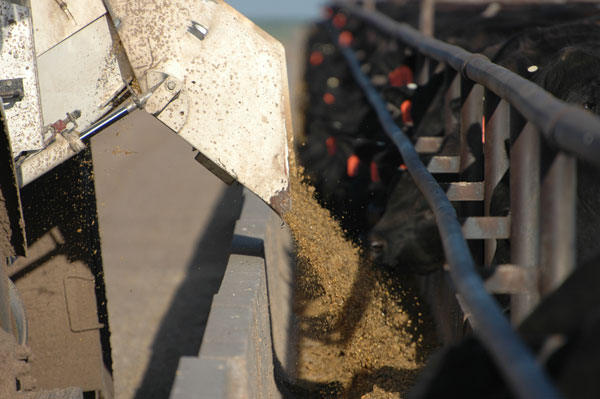COVID-19 and the market disruption that followed has turned the U.S. beef industry on its head. How different of an industry should we expect on the other side?
June 3, 2020

Plenty of heavy lifting remains in trying to navigate the ways COVID-19 is altering markets, the way business is transacted and life in general. Yet it will likely also pay to think about what the cattle and beef businesses will look like on the other side of the pandemic.
“It’s my opinion that the general society, at least here in the U.S., is taking a deep look at the meat and livestock supply chain in a way they’ve never done before in my lifetime,” says Glynn Tonsor, agricultural economist at Kansas State University.
Pandemic’s 1 silver lining
An apparent silver lining in the coronavirus cloud is that U.S. consumers are making it clear they want beef and other meats available to them the same way as before. You’ve likely seen pictures of empty retail meat cases, while there were plenty of alternative protein products left to buy.
Related to that is that self-quarantine may have forced some beef-loving consumers to become acquainted with beef cuts and recipes they ignored previously.
A more resilient beef supply?
Less encouraging to many in the business are conversations by consumers and politicians about things they believe would make the beef supply more resilient in the face of future pandemics and other shocks.
Things like shoving international trade into the back seat or completely off the road, keeping more beef and other meat at home, and bringing less in from other countries. Never mind that U.S. beef exports and imports both add value to the overall domestic beef system.
Modern history also suggests protectionism never ends well for the U.S. Tonsor points to the Smoot-Hawley Tariff Act of 1930 as an example.
Things like restructuring the packing industry to where there are more plants strung out across broader geography. Kind of like it used to be, when packers were located near human population centers like Chicago, rather than cattle population centers like the High Plains. Some even suggest state rather than private ownership.
Tonsor can see where those conversations might also lead to wonderments about the government owning cold storage to stockpile more meat than what typically equates to about a week’s worth of consumption held in private freezers.
Reasons for market as it is
Derrell Peel, Extension livestock marketing specialist at Oklahoma State University, comments, “The current structure and business practices of the industry evolved in response to the economic forces that drive the beef industry — like every industry — to be as competitive as possible.
“The cost efficiencies of large-scale cattle feeding and meatpacking operations is undeniable. Some current proposals will add cost and risk to the industry and will further increase the differences between cattle and wholesale beef prices.
“A less efficient, higher-cost beef industry will ultimately result in higher beef prices for consumers and make beef a less competitive protein industry. Simultaneously, cattle producers will face lower cattle prices; and as the industry downsizes, more will be forced out of the industry,” Peel says.
“Society needs to carefully balance peacetime efficiencies of having economies of scale that are core to our food system with a desire to have a food system that is more robust during stress times, like the pandemic,” Tonsor says.
Even within the industry, chatter recently emerged for changes that would alter markets.
Set-aside program
Things like developing a government-funded, temporary, fed cattle set-aside program in order to offset some of the cost associated with slowing the flow of current feedlot inventories by using slower-growth rations. Canada used that approach when fed cattle were backed up in the wake of BSE.
Tonsor and Lee Schulz, agricultural economist at Iowa State University, recently estimated carryover of fed cattle at 485,000 to 510,000 head May 1 and at 1.07 million to 1.34 million head June 1. So, the rationale is understandable.
Depending on specifics of a temporary set-aside program and the participation, it seems like there could be a net positive outcome.
Conversely, it’s hard to imagine anything positive resulting from recent suggestions that government mandate packers to buy a specific weekly percentage of their cattle in the cash market.
“Cattle producers will decide what sort of policy prescriptions they want to pursue that will affect how the beef industry functions. I am not suggesting what policies should or should not be promoted,” Peel says.
“My job is to make sure that the industry understands the implications and consequences of alternatives that are being considered.
“Some of the proposals being promoted today will have unintended consequences that are negative for the entire industry. This industry consists of many diverse sectors and perspectives; but in the end, the entire cattle and beef industry will thrive, or not, as a single industry.
“Be careful what you ask for,” he warns.
Spotlight on stocker sector
In the meantime, the stocker sector is gaining more visibility as cattle producers seek to extend the marketing window, warehouse cattle and spread out the flow of marketing.
All the while, stockers and backgrounders add value to the cattle in their care and increase the competitiveness of U.S. beef production.
With that in mind, nominations opened June 1 for this year’s National Stocker Award, sponsored by BEEF and Zoetis. Nominations close Aug. 1. You can find more details at BeefMagazine.com/stocker-trends.
Also on the stocker front, BEEF is conducting a second National Stocker Survey, sponsored by Zoetis. The first one, sponsored by Elanco Animal Health, provided a landmark, in-depth look at the stocker sector, including management, procurement and marketing practices.
Look for results from the new survey this fall.
About the Author(s)
You May Also Like





